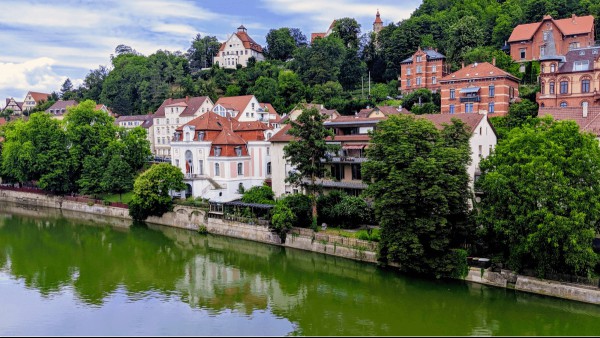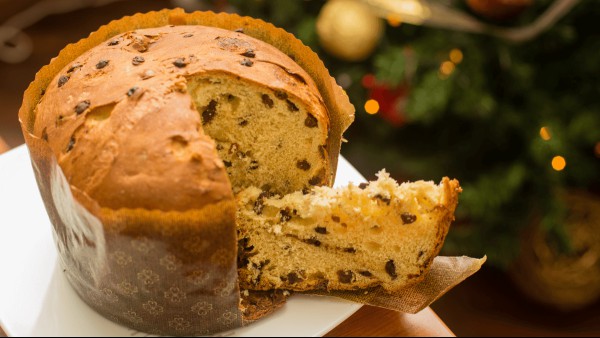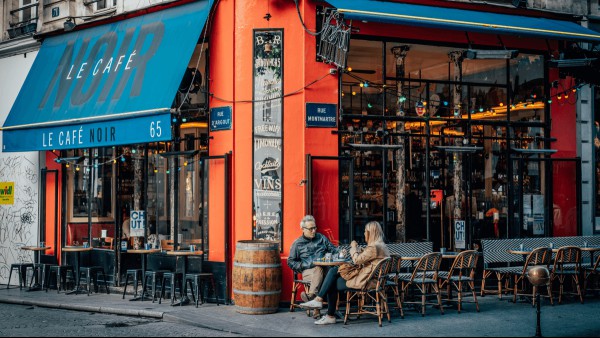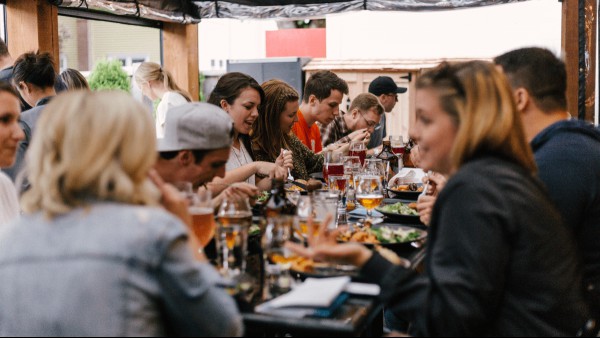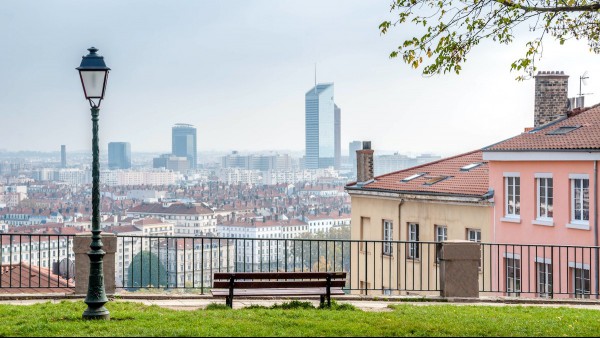Swabian German belongs to the roughly 20 different German dialects, which are local languages that are pronounced and spelled differently from region to region. Depending on the dialect, there may be stark differences from Standard German. For exactly this reason, so-called vernaculars such as Swabian, Bavarian, Franconian, Hessian or Saxon are cultural assets that help form the identities of the regions where they’ve originated from.
Swabian, however, has its share of both fans and detractors: Some celebrate its ingenuity and unique, almost cute sound; others are put off by the stereotypes of the “Swabian.” Here, we’ll explain what you need to know about residents of this region, and how you can better understand the Swabian dialect.
Typical Swabians
Probably no common household saying describes the Swabian attitude better than this rhyme: Schaffe, schaffe Häusle baue. Und ned nach de Mädle schaue. Translated into Standard German, this means that one should think only of work (schaffen), and under no circumstances girls (Mädle). So if the Germans are already known worldwide for their work ethic and frugality, the Swabians take this idea to a new level.
And if Germans are also often seen as stuffy, Swabians take this notion to the extreme. A classic ritual that takes place to the eternal astonishment and amusement of non-Swabians everywhere is Kehrwoche, or “sweeping week,” a typical Swabian tradition. In an apartment building, neighbors each take a week where they are responsible for cleaning the stairwell and foyer. To show who’s up next, a wooden shield with the inscription Kehrwoche migrates from one floor to the next. But that’s not all. In secret, residents spy on each other, monitoring and keeping tabs on whether their neighbors have really done their sweeping and mopping work. When one neighbor has done a particularly good job, that calls for this saying: Nix gschwätzt isch gnuag globt. This means something like “Saying nothing is the highest praise.”
Indeed, the Swabians are not known for their overabundant warmth. On the other hand, they’re always direct, their hearts are in the right place, and they don’t mince words. What some people treasure about Swabians, however, others treasure a bit less.
From Culinary Specialties To Anti-Swabian Sentiment
What the Swabians really do well is cook. From Maultaschen (meat dumplings) to Kässpätzle (egg noodles with cheese), many of the most famous cuisines of the traditionally hearty German kitchen originate here. And when it comes to Neigschmeckte — Swabian for sides — they’re always amazing.
People love to meet at the Besen. This word technically means “broom,” but here it refers to a particular sort of pub where you can meet for a Viertele schlotza (“glass of wine”) and a Vesper (literally a “break”). This break includes a typical German cold supper, consisting of some sliced bread or Brezeln (“pretzels”) with butter, spreads and sliced meat or cheese.
Swabians are also considered particularly inventive, which is evident in the large number of world-renowned companies in the region. Known for its automotive industry (home of Daimler and Porsche) and appliance giants such as Bosch, the city of Baden-Württemberg has been a successful economic center since the industrial revolution. As such, its focus remains on technology and mechanics.
Because of its role as a capital of industry, Swabians are thought of as being particularly well-off in Germany, sometimes to the dismay of residents of other German states. Indeed, the expression Schwabenhass (or anti-Swabian sentiment) has its own Wikipedia entry! Swabians who move to other areas are often held responsible for the gentrification of lower-income neighborhoods because of their assumed financial status.
The most salient example of this phenomenon is the Berlin district of Prenzlauer Berg — once a working-class district and now on the posh side — where one tends to hear quite a bit of Swabian on the street. They often are stereotyped as “yuppies” who renovate prewar apartment buildings, sip on lattes all day and shop exclusively organic. They’ve become a common subject on television and in films. These newcomers are displacing locals, who can no longer afford the area’s rising rents.
Of course, all of that is popular generalization. Naturally, it’s not the case for all Swabians. But behind the cliche there is always a glimmer of truth. Luckily, Swabians can often laugh at themselves. Indeed, this is a well-known slogan of the Baden-Württemberg tourism bureau: Mir könnet alles. Außer Hochdeutsch. This means, “We can do anything… except speak Standard German.”
What Is Swabian German, And Where Is It Spoken?
Swabian is the everyday dialect spoken in Swabia. This doesn’t only mean the state of Baden-Württemberg in Southern Germany, but also bordering regions such as Southwestern Bavaria and even a part of the Tyrol region in Austria. Therefore, Swabia isn’t a political territory, but rather a linguistic region in Southwestern Germany. By locals, it’s called Schwabenland or, lovingly, Ländle: It runs from Lake Constance on the Swiss Border, over the Swabian Alb — the low mountain range not far from the Black Forest — all the way to large cities such as Stuttgart.
Swabian is part of Upper German, and belongs to the small group of Alemannic dialects. This group also includes Swiss German and the Alsatian that is spoken in Eastern France. What unites these dialects the most is the transition from monopthongs to dipthongs, or single to double sounds. As a result, you don’t speak Swabian, you schwätzen, or “jabber.” Many of the best-known German authors and poets originally came from the Swabian region, from Friedrich Schiller to Hermann Hesse to Bertolt Brecht.
How Does Swabian German Sound?
For people arriving in Swabia for the first time, the Swabian dialect has a gentle sound. In general, both articles and vowels are simply swallowed, which makes the dialect a little more difficult to understand. It’s no wonder that even native Swabians from larger cities such as Stuttgart have trouble understanding their friends and family from small villages. In addition to the mumbling, there are also some vocabulary words that are completely different from Standard German (see below: Grombira).
One of the reasons for this is the extraordinary dipthong creation in Swabian: the building of double sounds. The Swabian dialect boasts 15 different dipthongs altogether: Vowels such as [iː] or [uː] turn into [iə] and [uə]. That means that the word for “light,” Licht, is now Liecht. Also, it’s guad instead of gut for “good.”
A Few More Swabian Dialect Specifics
- Hissing sounds. One of the most distinct sounds of Swabian is probably the softening of the plosives. That is, the “sch” sound is always used instead of “s.” So, for example, before a “t” you’ll see du bisch instead of du bist (you are).
- Shortening of the prefix ge– in the participle to g-. Instead of gegangen (gone), it’s gange; geredet (spoken) becomes gredet.
- “We” becomes “me.” One of the most noticeable changes in Swabian compared to Standard German is the use of mir as wir. Normally it’s used as a reflexive pronoun, when something is referring to itself. In Swabian, mir is also used in this case.
- Diminutives with -le at the end of a word. Favorite examples of this are Ländle (country), Häusle (house), Mädle (girl). But the -le isn’t just added to the end of nouns, but also expressions such as Sodele instead of So! and Jetztele instead of Jetzt! (now).
- The use of the word gell. Gell is a small, fine little word, that is often added to the end of a Swabian sentence and intonated like a question. It’s a Swabian dialect version of the Canadian “eh?,” and it’s often shortened to gä. It’s used in the sense of Stimmts? (true?), but most of the time an actual answer isn’t expected. Either way, it is always a sure sign that someone comes from southern Germany.
Famous Swabian Words
Muggaseggele
This is a word that often evokes delight. In Standard German, it essentially means “the mosquito’s scrotum,” in this sense the sexual organs of a fly. It is used to describe the smallest possible unit of measurement there is. In everyday use, one says a Muggaseggele Salz if one wants a pinch of salt.
Herrgottsbscheißerle
This is one of those typically Swabian words that are widely known across the Ländle. In predominantly Catholic countries, meat traditionally isn’t served on Fridays, but fish is. In order to pull one over on the Herrgott — the Swabian for the Almighty — the meat was simply encased in a dough and thus this word became the nickname for Maultaschen.
Grombira
So what’s a Grombira? What kind of German word does it sound like? Unfortunately, that’s no help. In fact, Grombira is the Swabian dialect word for potato. Yes, the difficulties in understanding Swabian come from more than its pronunciation. In Stuttgart, for example, they’re simply called Kardoffle.
Spätzle
The Swabians swear by the preparation of their Spätzle (egg noodles): Whether it’s as a side to a rich roast or as Kässpätzle (cheese Spätzle), the important thing is that they are handmade. Every Swabian household has an extra wooden board and a so-called Spätzlesschaber at home, a scraper made of stainless steel, with which one can carve small stripes into the noodle dough over and over, which are then scraped into boiling water.
Heilig’s Blechle
On the one hand, this phrase an expression of astonishment; on the other, it’s a description of an automobile. The Swabians and their cars is a story in itself. Blechle is the body of the car; heilig (holy) denotes appreciation.
You can see, then, that Swabians seem not just industrious and grounded, but also creative and inventive. As always, the truth lies somewhere in the middle of the two when it comes to the truth of Swabians. As they would say, S’ gibt sodde ond soddiche, which means “There are such and such,” roughly the equivalent to the English “To each their own.”

